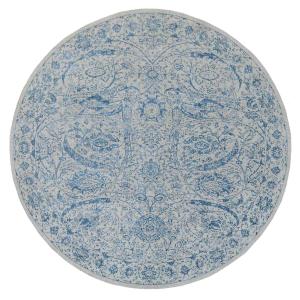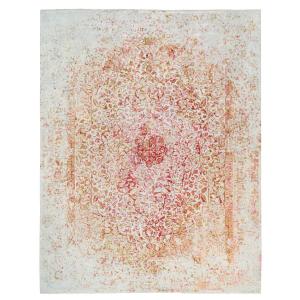Uncovering the Extensive History of Handcrafted Rugs
Artisans use traditional handcrafting skills that have been handed down for ages to create unique rugs meticulously.
CARLSTADT, NEW JERSEY, UNITED STATES, July 23, 2024 /EINPresswire.com/ -- Artisans use traditional handcrafting skills that have been handed down for ages to create unique rugs meticulously. These techniques have been used by artists with extraordinary levels of competence. The art is magnificent and exudes an air of sophistication due to its complex features.
Rugs that are knotted by hand have a rich and extensive history that is both interesting and captivating by its very existence. They display their creative merit, cultural importance, and everlasting allure by being deeply ingrained in human civilization. Rugs are an excellent way to learn about the past and present of the places they are manufactured since they embody the culture and history of those places.
The History of Handcrafted Rugs in Different Era
A certain view implies the history of human civilization has an unbreakable connection to the beginnings of handmade, exclusive rugs. Initially, rugs served essential human needs, such as providing warmth and serving as a sleeping mat. They were also used to cover the deceased or carry personal possessions. These primitive rugs had a practical purpose: they shielded users from the sun, wind, and rain.
It isn't easy to pinpoint the exact period and location of the first instances of rug creation because of the practical character of the original rugs. Although rug making became more creative and beautiful in subsequent ages, there is a story that the first rug had spiritual meaning.
Art of Infusing Pattern
Weavers infused their creations with patterns that conveyed their feelings, themes from their environment, and symbols from their spiritual systems. This adds a distinct personality to every handcrafted bespoke rug. The rugs' increased design and quality probably increased their economic worth to the weavers.
Several techniques enhance the unique texture, pattern, and lifespan of handwoven rugs. The three most often used processes are hand knotting, tufting, and hand weaving. Expert crafters tie individual knots to create intricate patterns and embellishments using a traditional procedure called hand-knotting. Thanks to this detailed technique, the rug is made to last for many generations, improving its aesthetic appeal.
The Mughal Era Designs
The history of rug-making in India can be traced back to medieval literature. However, during the Mughal Dynasty's rule over Northern India from the 16th to the 18th century, the rug-weaving business truly flourished.
Reportedly, Great Emperor Akbar—grandson of the dynasty's founder Babur—sent rug makers to India to set up business after longing for Persian pleasures, especially rugs. Locals welcomed them with open arms. A thriving rug-weaving industry emerged across Agra, Bhadohi, and Jaipur, now regarded as India's primary rug-making regions.
Rugs were made using various materials. The wealthiest ones were composed of cashmere, silk, and fibers twisted into gold thread. They were hand-knotted using a Persian knot method. Early Mughal rugs were mainly decorated with Persian motifs. Despite this, a unique visual style emerged within the Mughal courts. This style frequently featured flora and animals, reflecting the Mughal Emperors' deep appreciation for the natural world.
A New Creativity in the Realm of Rugs
Numerous ancient civilizations had thriving rug industries. Ancient Egyptian creativity was shown by handwoven rugs discovered in Egyptian tombs. The Persian Empire, which included modern-day Iran, rose to fame for producing exquisite rugs with ornate patterns. As ornamental pieces, rugs were highly prized by the ancient Greeks and Romans.
The Islamic Golden Age, which lasted from the eighth to the fourth century, significantly impacted the rug-making industry. During this time of extraordinary intellectual, cultural, and economic expansion, rug makers' skills and patterns improved significantly. Rug artisans experimented with different materials, weaving patterns, and dying processes as the Islamic world grew and took in a wide range of creative inspirations, producing rugs that were ever more complex and elaborate.
New patterns and motifs that reflected Islamic cultural ideals and creative tendencies emerged during this time. Rug designs increasingly included geometric patterns, floral motifs, and calligraphic inscriptions, demonstrating the artistry and ingenuity of the craftspeople. An iconic element of Islamic art, the arabesque is a highly stylized pattern based on interweaving plants and geometric shapes often used in rug designs.
The Popular Emergence of Cultures
With its ability to absorb other cultures, the Ottoman Empire fostered a rich rug-making tradition over three continents, significantly influencing rug production and commerce. Because of its advantageous position, the imperial court promoted expert artisans, weavers, and European goods. Their rugs, which strongly influenced the development of rug-making, combine geometric and curvilinear motifs, vibrant colors, and distinctive Turkish knotting methods.
The Blend of Chinese Culture in Handcraft Rugs
Beijing developed as a hub for producing Chinese imperial rugs with silk and gold thread patterns, emphasizing creative originality and skill. The rugs were prized for their complex symbolism, which included geometric designs, vivid colors, dragons, phoenixes, and flowers. They represented their culture's emphasis on living in harmony with nature and traditional fortunate teachings.
Customers and collectors have long valued the artistry and heritage of handcrafted rugs, which has sparked a renewed interest in conventional rug-making methods. These days, many rug producers blend traditional techniques with modern styles to produce truly distinctive rugs and imaginative pieces that suit various interests.
A Modern Twist on the Traditional Rugs
Rugs have been given a new lease of life via the combination of history and innovation, ensuring they continue to be relevant and appealing in the present. Handcrafted Persian and Oriental rugs are in excellent demand today due to their beauty, skill, and cultural importance, which is evidence of the continued attractiveness of this age-old trade.
Rugs still have a significant cultural and aesthetic relevance in today's society. They are valuable items that improve a room's aesthetics, but they also celebrate and preserve the rich histories of the many communities that went that went into making them.
Ori Wilbush
1800GetARug
+1 201-933-4300
email us here
Visit us on social media:
Facebook
Instagram



